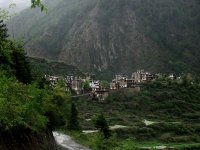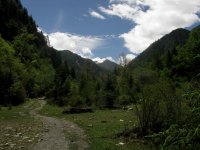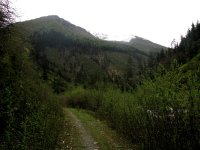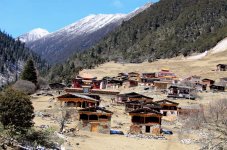Dear James,
Thanks for your suggestions and support.
You are right. Poachers are persistent and money-orientated.
We have had this consideration, too. And of course the best way would be to keep them away from the birds, regardless of the method. Most sustainable way of course is to make them quit voluntarily. But, and here’s the main problem,
A) I think they are too many to convince them all
B) How much could they getting out of being a guide, and what keeps them from guiding and collecting at the same time? That’d be double income. I have tried this a few years ago in the context of a forestry project in a remote village. “Stop tree cutting by promoting eco-tours through primary forest”. The guides – one or two villagers – were the only persons who actually took benefit from this concept. The others kept on cutting trees. And tourists coming were not enough to keep the stones rolling. A big failure – at least for the following years!
C) Working as a guide in Danba probably is not very promising. Birds are not so many (well there are, but not easy to watch since stretched over a huge territory) and the few birders who potentially show up actually won’t need a local guide.
So we abandoned the idea of converting people. Even the idea of captive breeding seems to be unrealistic at the moment. Only a few villagers would be engaged while the empty-handed poachers still might find a way to get onto their prey. Besides, the bureaucratic part of this scenario is quite difficult to manage – at least for a small bunch of volunteers.
Anyway, we are aware that the time is running against us (and the Parakeets), but we still will do it step by step, as far as circumstances allow.
Future perspectives surely include development of eco-tourism/ bird-watching in this area and maybe aren’t so far away.
Hmm, looking at the habitat there, I would be surprised if birds scarce, I'm sure a visit in the spring, when the parakeets are present would reveal plenty of interest, just takes a bit of searching when in new areas.
I terms of why wouldn't the guides do both jobs - this is when a good look and chat with successful nesting protection schemes is invaluable and find out why they worked and the poachers only protect the nests now. The best nest protection scheme I know of is the waterbird colony at Prek Toal, Cambodia.
A nest protection scheme for Bengal Florican in Cambodia involving the locals (that works!) is giving the local c$10 for finding a nest, then c$20 if the nest is successful. This scheme has also worked for White-shouldered and Giant Ibis in the same country.
White-eared Night Heron in northern Vietnam - a local guy in a remote park (Ba Be), guides people to show them the heron nests, supplementing his income, from being unknown just 3 years ago, he now has 4 nests monitored this year, and a couple more nearby with another person doing a similar scheme.
Philippine Cockatoo has a nest protection scheme and the results have been quite amazing.
Look at the Tmatboey project in Cambodia - 7 years ago when that project started in the remote Northern Plains of Cambodia it was not known how it would fair, but with small very dedicated people it is now an amazing eco-tourism project that involves the whole community benefiting (with the use a 'community-pot' - every birder pays $30 on top of the guiding/accommodation fees that goes into the pot then at the end of the season that gets given to the community to spend - they get 150 visitors per annum now).
These projects can work, and will work, if understood correctly and the right approach is taken - I have been involved in the latter project and the way it has worked is quite incredible and heart-warming.
Why would birders visiting not need a local guide?? If the local guide can show them a parakeet at the nest for a sum, then it would work. If it was a locally-run project, whereby the village had a/some homestays (rotional basis so everyone gets an income), then a local guide can be compulsory.
I think 'abandoning' the idea of converting local people is a big shame and I can't see how a project centered near a local community can work without their support - I have seen too many failures that have ignored this fact.
Have you approached NGO's working in China? NGO's with proven track records in this field are worth contacting for support, guidance and even financing. I can offer many contacts if required (PM is best).
Definitely work looking into, as I do not believe any/all poachers would quit voluntarily, why would though, it makes no economic sense...
Best of luck,
James

















